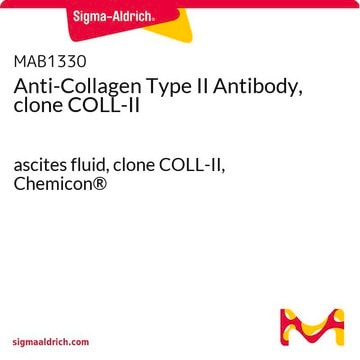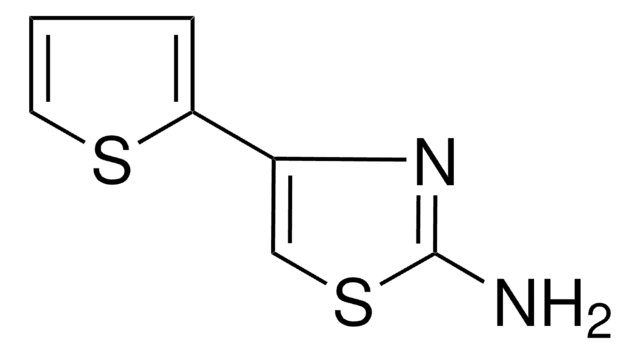MAB8887
Anti-Collagen Type II Antibody, clone 6B3
clone 6B3, Chemicon®, from mouse
Sinônimo(s):
Anti-Anti-ANFH, Anti-Anti-AOM, Anti-Anti-COL11A3, Anti-Anti-SEDC, Anti-Anti-STL1
About This Item
Produtos recomendados
fonte biológica
mouse
Nível de qualidade
forma do anticorpo
purified immunoglobulin
tipo de produto de anticorpo
primary antibodies
clone
6B3, monoclonal
reatividade de espécies
human, chicken, mouse, salamander
fabricante/nome comercial
Chemicon®
técnica(s)
immunofluorescence: suitable
immunohistochemistry: suitable
western blot: suitable
Isotipo
IgG1
nº de adesão NCBI
nº de adesão UniProt
Condições de expedição
wet ice
modificação pós-traducional do alvo
unmodified
Informações sobre genes
human ... COL2A1(1280)
Especificidade
Its epitope is localized in the triple helix of type II collagen. It shows no cross-reaction with type I or type III collagen. Immunoblotting of CNBr peptides of collagen II shows that MAB8887 reacts with CB11 (25kDa) fragment which is the site of immunogenic and arthritogenic epitopes along the intact type II molecule.
In pepsin solublized collagen II, MAB8887 reacts with a 95-97 kDa fragment, as well as, the native single chain of 120kDa. If propeptides are present, MAB8887 will detect a 200kDa fragment.
Imunogênio
Aplicação
Cell Structure
ECM Proteins
Immunohistochemistry (Formalin/Paraffin): 1-2 μg/mL, 30 minutes at room temperature. Staining of paraffin embedded tissues requires digestion of tissue sections with pepsin at 1mg/mL in Tris HCl, pH 2.0 for 15 minutes at RT or 10 minutes at 37ºC.
Immunofluorescence
ELISA
Optimal working dilutions must be determined by end user.
Descrição-alvo
forma física
Armazenamento e estabilidade
Nota de análise
Cartilage in lung or fetus
Outras notas
Informações legais
Exoneração de responsabilidade
Not finding the right product?
Try our Ferramenta de seleção de produtos.
Código de classe de armazenamento
12 - Non Combustible Liquids
Classe de risco de água (WGK)
WGK 2
Ponto de fulgor (°F)
Not applicable
Ponto de fulgor (°C)
Not applicable
Certificados de análise (COA)
Busque Certificados de análise (COA) digitando o Número do Lote do produto. Os números de lote e remessa podem ser encontrados no rótulo de um produto após a palavra “Lot” ou “Batch”.
Já possui este produto?
Encontre a documentação dos produtos que você adquiriu recentemente na biblioteca de documentos.
Nossa equipe de cientistas tem experiência em todas as áreas de pesquisa, incluindo Life Sciences, ciência de materiais, síntese química, cromatografia, química analítica e muitas outras.
Entre em contato com a assistência técnica







